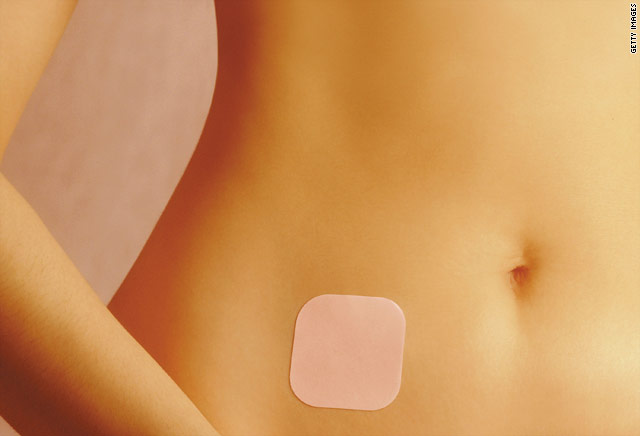Where's the male birth control pill?
- The birth control pill first came to market in 1960
- It is more challenging to make a male pill because men produce 1,000 sperm per second
- Male hormonal gels and injections are farther along than pills
- Emergency contraceptive pill for women who have infrequent sex is also in development
(CNN) -- When the pill came out in 1960, women got to take charge of their own bodies in a new way: They didn't have to rely on men to prevent pregnancy.
Fifty years later, women have all kinds of pills and devices to fit their birth control needs. But while they have the freedom to choose what method works best for them, they are still the ones altering their own bodies for the sake of safer sex.
They are the ones taking daily medications or wearing small hormone-releasing gadgets that doctors demonstrate with scary-looking diagrams.
Where's the prescription for men?
It turns out that scientists around the world are working on more options for men and women to assist with preventing pregnancy; some promising methods are in clinical trials and could fill in some of the gaps in the current contraceptive marketplace.
For the men
"The joke in the field is: The male pill's been five to 10 years away for the last 30 years," said Dr. John Amory, researcher at the University of Washington.
Researchers have been promising a male hormonal contraceptive option for a long time, but there are good reasons why it's so hard to get that technology right. While women make one egg a month, men produce about 1,000 sperm every second, Amory said.
"It proves more difficult to shut down that level of production," he said.
The female pill uses hormones to prevent ovulation, turning off egg production as if she has already ovulated that month. But men don't have periods where they naturally turn off sperm production, so it's harder to get them into that state, he said.
The male hormonal methods in progress uses a combination of testosterone and progestin, which turn off signals from the brain to the testes. Approximately 3,000 men have been enrolled across more than 30 studies on the topic over the last 30 years.
About two-thirds of men who have had hormone injections suppress sperm production totally, and in 90 percent overall, it's very low. For the remaining 10 percent, however, it does not adequately protect against possible pregnancy.
But a large study on more than 1,000 men in China, published in 2009 in the Journal of Clinical Endocrinology and Metabolism, showed more than 95 percent efficacy for hormonal injections in men. Men received the injections and relied on them as the sole method of contraception; researchers looked at whether the couples got pregnant.
It's unclear why hormonal contraceptives appear to work better in men in China than in the United States, he said.
 Gallery: From the pill to the patch
Gallery: From the pill to the patch
"It's something to do presumably with the genetics of the Chinese," Amory said. The regulatory agencies have not approved this method in China, he said.
Male contraceptive gels and injections are farther along than the pill in clinical trials because they're easier to dose, Amory said.
The gel, in phase 2 trials looking at efficacy, absorbs across the skin of the arm, chest or upper back, akin to putting on sunscreen, he said. Phase 3 would be large-scale trials.
"It could be very effective in preventing pregnancy, but if there isn't a clear market for it, companies understandably are a little reluctant to invest heavily in it," said Andrea Tone, professor of history at McGill University in Montreal, Canada. Tone has written extensively about the history of contraceptives.
One concern is some women don't trust men to use hormonal contraceptives. They say they would have to watch their partners take the pill in order to trust them, Tone said. "The male pill sets up possibility for conflict that the female pill doesn't," she said.
Still, a study in 2000 led by Anna Glasier in the journal Human Reproduction found that most women would trust their male partners to take a pill. Researchers surveyed nearly 1,900 women in Hong Kong, China, Scotland and South Africa, and they found that only 2 percent -- or 36 women -- would not trust partners to use the male pill.
"This survey should dispel the myth that women would not trust their partners to use a 'male pill' reliably and illustrates the potential market for the method," the authors wrote.
Researchers are also working on an at-home sperm count test, similar to a pregnancy test, so that men (and their female partners) would be able to see that the hormonal contraception is working, Amory said.
There has also been talk of a spray-on condom, which began testing in 2007. It works by spraying liquid latex over the penis, ensuring a perfect fit. The challenge, however, is getting the latex to dry fast enough. Read more from Time.com
For the women
Today, women can get a vaginal ring, called the NuvaRing, that the pelvic floor muscles hold in place for three weeks. The hormones estrogen and progestin prevent the ovaries from producing mature eggs.
Research from the Population Council, a nonprofit organization, is looking at a slightly bigger ring that could be left in place for a year.
This would be especially useful in the developing world, where access to birth control is an issue, said Dr. Melissa Gilliam, chief of the section of family planning at the University of Chicago Medical Center, who is working on this research.
The kind of progestin used in this yearlong ring is new and is not orally active, she said. Breastfeeding mothers would not have to worry about the hormones passing into breast milk.
Phase 3 clinical trials have just been completed, meaning the product could become widely available in the next few years, she said.
Another female birth control innovation in the works is an emergency contraceptive pill specifically designed for women who have infrequent sex.
"Instead of being on a birth control for an entire month, it would almost be like replacing a condom," she said. Of course, condoms help prevent sexually transmitted diseases, while hormonal methods do not, she pointed out.
Many women stop their current birth control pill because of concerns about side effects, which may include intermittent bleeding, headaches and nausea. But those who take it on-again, off-again are the most likely to have these negative effects, she said.
The emergency contraceptive that's being talked about now would be ideal for those women who don't want to be on birth control full-time, as long as they don't have frequent sex, she said.
There are a variety of birth control pill options available now for women who need to reduce menstrual cramps or treat acne; others are designed for women who can't take estrogen. The pills of 2010 contain fewer hormones than 50 years ago and come in different doses.
The Food and Drug Administration approved a new pill, Natazia, on Thursday that is the first "four-phasic" oral contraceptive marketed in the United States. That means the doses of progestin and estrogen vary at four times in each 28-day treatment cycle.
There's still more work to be done on improving hormonal contraception already on the market. A recent study in the Journal of Sexual Medicine found that women taking non-oral and oral hormonal contraceptives had a higher risk of female sexual dysfunction.
More research is needed to determine whether different amounts of estrogen and progestin affect this negative consequence of hormonal contraception.



